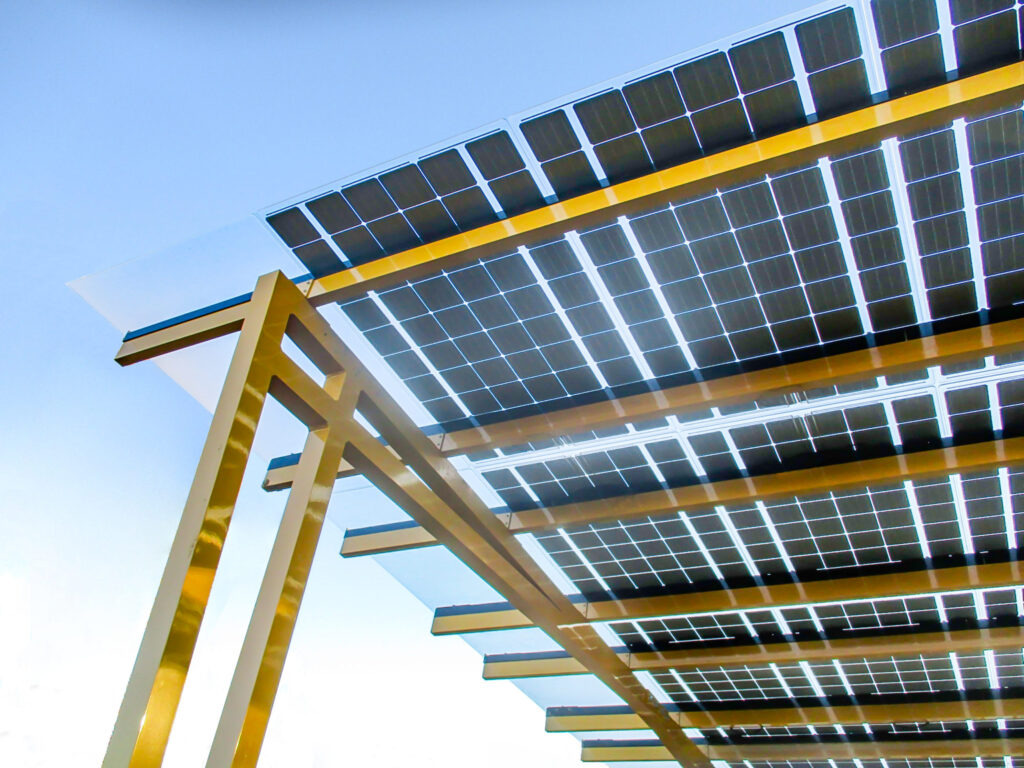Frameless glass module solar panels, also known as frameless solar panels or glass-on-glass solar panels, have a distinctive appearance compared to traditional framed solar panels.
- Glass-on-Glass Construction: The most noticeable feature of frameless glass module solar panels is their construction. Instead of a conventional aluminum or steel frame that surrounds the edges of the panel, these modules consist of two layers of glass: a top layer (front glass) and a bottom layer (back glass). The solar cells are encapsulated between these two layers of glass.
- Clear Edges: Frameless solar panels do not have a visible frame around the perimeter. Instead, the edges of the glass layers are typically clear or have a minimal, translucent seal. This gives them a sleek and modern appearance.
- Minimalist Aesthetic: The absence of a bulky frame gives frameless solar panels a minimalist and aesthetically pleasing look. They are often used in architectural applications, such as building-integrated photovoltaics (BIPV), where aesthetics are important.
- Uniform Appearance: Frameless glass module solar panels have a uniform and continuous glass surface from edge to edge. This design can make them blend more seamlessly with the surrounding environment, whether they are integrated into a building’s facade or used as skylights or canopies.
- Different Sizes and Shapes: Frameless solar panels can come in various sizes and shapes to suit different installation requirements. They can be rectangular or square, but their design flexibility allows for custom shapes and sizes.
- Backsheet-Free Design: In addition to lacking a frame, frameless solar panels often eliminate the need for a traditional backsheet, which is a layer that covers the rear of conventional solar panels. This simplifies the design and further contributes to their sleek appearance.
- High Transparency: The front glass of frameless solar panels is highly transparent, allowing a significant amount of sunlight to pass through and reach the solar cells. This transparency is one of the reasons why they are used in BIPV and architectural applications.
- Reflective Back Glass: The back glass of frameless solar panels may have a reflective coating to bounce sunlight back through the solar cells, improving overall efficiency.
It’s important to note that frameless glass module solar panels are often used in specific applications where aesthetics, integration with the building structure, and a modern appearance are essential. In more traditional solar installations, framed solar panels with aluminum or steel frames are more common due to their cost-effectiveness and ease of installation. The choice between framed and frameless panels depends on the project’s requirements and design considerations.


